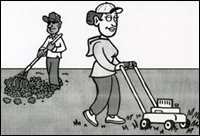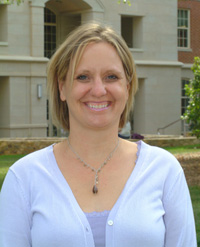Life Interests and Values (LIV) Cards
Supporting Self-Determination in People with Aphasia
Katarina Haley describes the purpose of the expressive cartoon cards spread across her desk, showing drawings of various activities of daily life:
”It is important for the person with the communication disorder to express his or her own personal goals for rehabilitation. The LIV cards give these patients the opportunity to select activities for home, community, physical exercise, social events, and hobbies or entertainment that matter to them.”
Friends and family members are also given a printed questionnaire that addresses the same content as the cards. Often the results may differ from the patient’s own choices. This underscores the importance of having the patient be the primary one to make the selections. After selections have been made, an item-by-item analysis is conducted of the responses of all the parties involved, and they are studied for congruence and differences. A team of occupational therapists, speech-language pathologists, and physical therapists all work together to help the patient develop and achieve their own goals for rehabilitation.
The LIV cards enable the patient’s rehabilitation program to be self determined and individualized. The long-term goals of this research study are to provide effective procedures for including patients with aphasia as key decision makers in their own rehabilitation program.
Life Interests and Values Project (LIV): http://www.med.unc.edu/ahs/sphs/research/the-life-interests-and-values-project-liv



Courtesy of Katarina Haley

Courtesy of Katarina Haley
”Every individual that we work with is so different. It’s not just that they have different personalities, but also the way that various pathologies affect their nervous systems. It’s sort of nature’s experiment, and so you have this opportunity to look into the way our communication systems were put together and see how it breaks apart and try to figure out some sort of pattern in this enormous complexity of speech and language.”


 Adult Neurogenic Communication Disorders
Adult Neurogenic Communication Disorders





